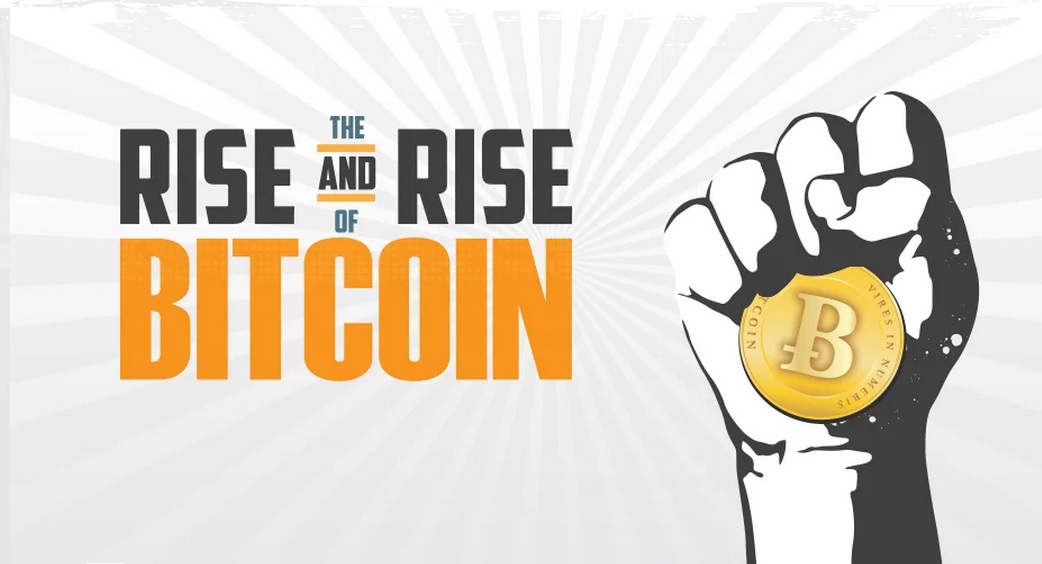Jacqui Frank, Kara Chin and Sara Silverstein – Oct. 18, 2017
In the first episode of “the bit,” FundStrat Global Advisor co-founder Tom Lee explains different methodologies for valuing bitcoin. Lee shares his short-term and long-term bitcoin price targets based on these valuation methods. Following is a transcript of the video.
Tom Lee: I’m here with Sara to talk about why we believe bitcoin could reach $25,000 in 5 years.
Sara Silverstein: So you actually have a few research notes about this.
Lee: Yes.
Silverstein: And you’re — can you talk about your short-term model first. Where do you see bitcoin going and what valuation method are you using?
Lee: Yeah, in the short-term we think bitcoin has really followed very closely the idea of acting like a social network. Meaning the more engagement there is, the greater the value rises. And in the short-term, we think bitcoin will reach at least $6,000 by mid-2018.
Silverstein: And you’re using Metcalfe’s Law, can you explain that?
Lee: Yeah, so Metcalfe’s a professor. He actually came up with a theorem based on George Gilder, which is the value of a network is the square of the number of users. And so if you build a very simple model valuing bitcoin as the square function number of users times the average transaction value. 94% of the bitcoin moved over the past four years is explained by that equation.
Silverstein: Wow. Just to use an example, so this explains the network effect. Like one fax machine is worthless because there’s nobody you can fax. But once all of your friends have fax machines, it becomes very valuable. So has this been effective in valuing things, in the past, that have a strong network but weren’t producing any money?
Lee: Yeah, so three use cases — or businesses — where Metcalfe’s Law really explain the growth of the market value, is Facebook, Alibaba, and Google. And these are all examples where the number of users — like if you double the number of users, you’re more than doubling the utility value. It’s a little bit like the commercial in the 70s, you know, Prell. When you tell your friends, and they tell their friends, and so on.
Silverstein: And so your long-term valuation model — you’re looking at it — bitcoin, as a substitute for gold, as an alternative currency?
Lee: Yes, that’s right, and it’s really — what we were trying to do is recognize that the creation of value in the future is in the digital world. I mean, all future great business are going to be digital. And with that concept, bitcoin represents a store of value because it’s an encrypted — personal encrypted database, that for seven years hasn’t been hacked. I mean, that is a way to store value. And if personal information is our gold, bitcoin is our digital gold. So we think that the gold market, which is 9 trillion, and for a generation of investors gold was their store of value. I think this next generation of young people view bitcoin as their store of value. And if it captures 5% of the gold market, it’s worth at least $25,000 per unit.
Silverstein: And that’s the big number, that your — the $25,000 per unit hinges on the 5% of the money going into gold, going into bitcoin. So how do you come up with the 5%?
Lee: We explain this in our research. It’s a very — it’s actually the most conservative collection of elements to get to the 5%. Because number one, we assume that gold only appreciates essentially a nominal GDP. So there’s no inflation. And we assume that money supply grows at slower rates than it has historically. And then the 5% number, really reflects the assumption that investors will allocate in their blended portfolio only 5% to alternative currencies. Today, that allocation is much greater, it’s closer to 10% or 15% in some portfolios. So, but at a 5% allocation that would value bitcoin at $25,000. You could easily get to $100,000, $200,000 numbers.
Silverstein: Is bitcoin special or is this just about all cryptocurrencies?
Lee: It’s both. I mean, I think what’s unique is bitcoin is the dominant coin, or token, in a growing universe. I mean, there are 630 tokens out there now. But what we found in our research is that the more coins that are being issued, the more are using bitcoin as their master ledger, which means bitcoin’s value is actually growing as there’s more coins.
Silverstein: And you mentioned to me earlier that if some big investors get interested in bitcoin that the price could skyrocket really quickly?
Lee: Yeah, that’s right. It’s — what’s interesting is bitcoin is uncorrelated to other asset classes right now, and I think it really speaks to the fact that it’s not institutionally held. It’s really held by miners, and enthusiasts. Most of them are what they call hodlers. You know, they’re not sellers of the coin. So the liquidity of bitcoin is deceptively small. So if you can imagine, you know, there was recently of a very well-known portfolio manager starting at a $500M hedge fund. If he employs typical leverage, he’s buying $2.5B of bitcoin. There isn’t $2.5B of bitcoin available to purchase. So I think you can easily see a liquidity-based move in bitcoin that’s much beyond our target prices.
Silverstein: How much beyond?
Lee: Well that’s getting into the realm of — nothing I would officially endorse — but, you know, when you think about liquidity spikes. Look what happened to oil. Remember oil went to $300 on a liquidity spike. So it probably would be easy to imagine that bitcoin could be $75,000 or something like that.
Silverstein: And can you help me understand what bitcoin is? Is it a currency? Is it an asset? Why do we compare it to gold? Like, why is that a fair comparison? And what is gold? Is it a commodity or a currency?
Lee: Yeah, it’s a great question, because I think, as a primer someone has to finally accept what bitcoin represents. And what it is, is at the core, it is just a very well designed database. One that because of the way the encryption is built into it, is very hard to crack. So, unlike typical databases where the encryption key is held by central entity, bitcoin has this thing called miners and nodes. That each of the nodes keeps a copy of the database, and therefore you need 51% of the nodes to agree on a transaction to say it’s valid, otherwise it’ll say it’s a spoof transaction. Which means that bigger the database grows, and the more miners there are, the harder it is to crack. So bitcoin is encryption, but the encryption strength grows as there’s more miners. And today, it’s estimated that it would cost about $31B to create one fake coin.
Silverstein: Wow.
Lee: So it’s easier to break into a central bank, like Swift in Nigeria, and steal $50M from there, than it is to try to get one fake bitcoin.
Silverstein: And do you think it’s fair — I know that it’s very hard to understand the valuation of something like a bitcoin. Do you think it’s fair to look at the blockchain, that it represents, and say let’s look at the value of this, and the bitcoin is what keeps us going, and keeps it secure, and so that’s where the value comes from?
Lee: Yeah, actually, that’s a really important point. That by design — bitcoin was designed to be what they call a fat protocol. Which means the protocol error, which is the encryption, is trying to reward users of it. And it’s rewarded through paying miner fees. It’s a little bit like — imagine if — remember Facebook’s value is its users, but all of the upside in owning Facebook was the investors. Bitcoin said okay look let’s reward Facebook users. That the more there are, the more money you get. That’s how bitcoin’s designed.
Silverstein: And the more externalities you create by participating in Facebook, the more you’ll get paid, basically?
Lee: That’s right and also, because of the nature of bitcoin, it means the applications that you build on top of it aren’t as valuable. Because if you try to build a banking system on bitcoin — well it has better encryption than an application. So bitcoin itself will always have more value than the applications built for it.
Silverstein: So, this is 100 grams of gold, which at the time that I got it was worth about the same as a bitcoin. Which you think is a better store of value? Do you think that I should switch my bitcoins for gold or my gold for bitcoins?
Lee: There’s a whole generation of young people — including my daughter who’s a CS major — that would say they don’t understand why gold at all represents a store of value. And it’s important to keep in mind, you know, for many years, gold’s price never even moved when it was – when the dollar was on the gold standard. So I would say I would easily change that for a bitcoin.
Silverstein: Great, and when gold started trading freely — you point out in one of your notes — that the volatility looked just like bitcoin, and then eventually it settled down?
Lee: That’s right. You know, when people talk about bitcoin’s volatility today, they’re forgetting that when we went off the dollar — the gold standard on the dollar, gold’s volatility for 4 years was about the same as bitcoin’s volatility today.
Silverstein: Great, thank you so much.
Lee: Yeah, thanks for having me.
Get the latest Bitcoin price here.
Do you want to see people Buying or Selling Bitcoins? See this.





